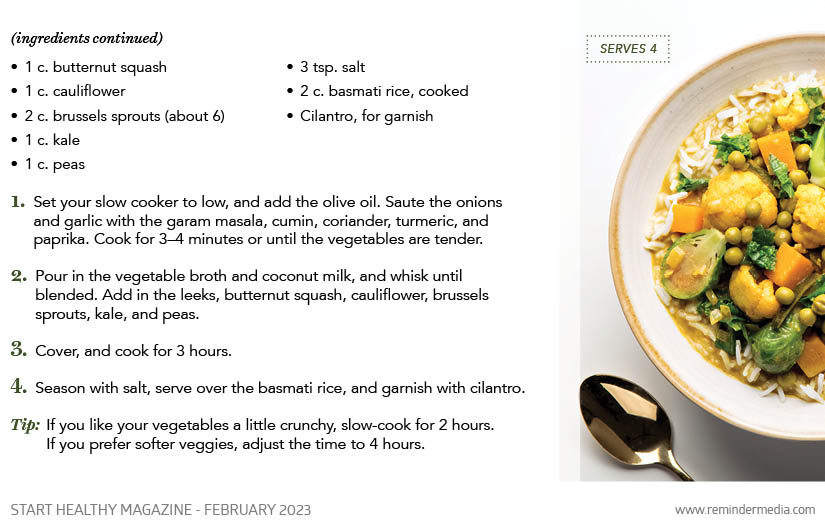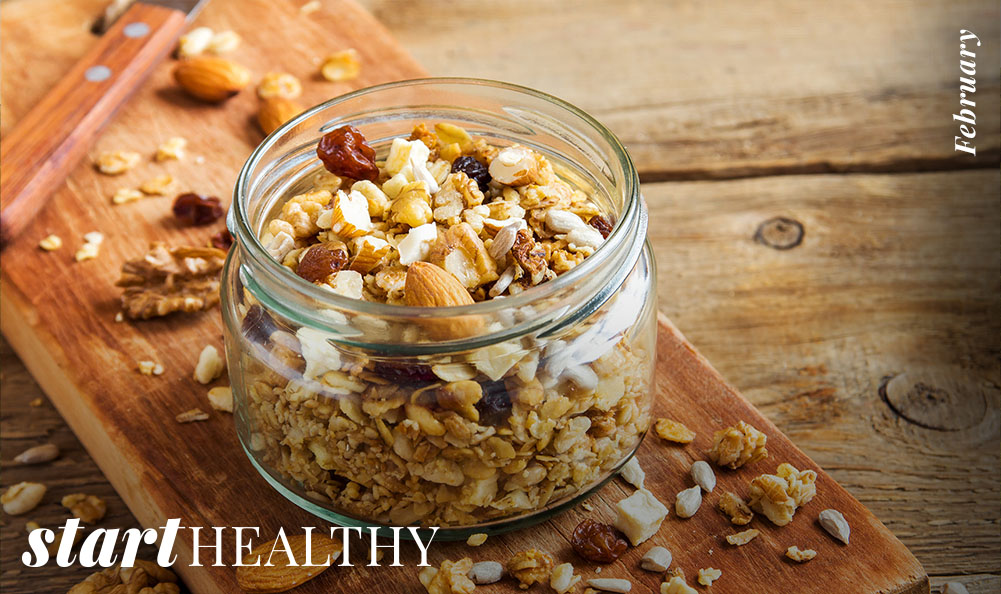Whether or not you set resolutions last month, February brings another opportunity to prioritize your physical and mental health. This issue of Start Healthy is here to help you stick to your health goals with a closer look at the benefits of dietary fiber, a guide for refreshing tea-based drinks to try, five destinations to consider for a winter getaway, and simple yet delicious recipes that are great for lower temperatures.
You may have wondered why fiber can be so good for you if your body can’t digest it. To help you better understand the importance of this nutrient, be sure to read the enclosed article on its various health benefits and how you can incorporate more of it into your diet.
Millions of people drink a cup of tea every day. From boba to matcha to chai lattes, there are numerous ways to enjoy this delicious beverage that can benefit your physical and mental health. Inside you’ll find an exploration of the benefits of drinking tea as well as a list of popular tea concoctions you’re going to want to try.
Winter trips are a great way to refresh and take a break from your normal routine. And while camping in winter might not be your first thought, it presents a unique opportunity to explore the beauty of nature. Check out the list of the best parks for a winter camping trip for you and your loved ones.
Cooking delicious meals doesn’t have to be complicated or time consuming. Inside you’ll find two slow-cooker recipes that are easy to prepare and sure to warm you up.
Here’s to a wonderful and healthy February! As always, it’s a pleasure to send you this magazine.
It’s a scientific oddity: an essential nutrient for whole-body health is a substance your body can’t even digest. And yet studies show that most Americans need more of it. Dietary fiber is one of the most misunderstood but vital components of your diet: it’s an aid to digestion, heart health, and weight loss—precisely because your body can’t use it.
The confusion is understandable. However, this guide should clear up any questions about the benefits of dietary fiber and highlight where to get more of this essential nutrient.
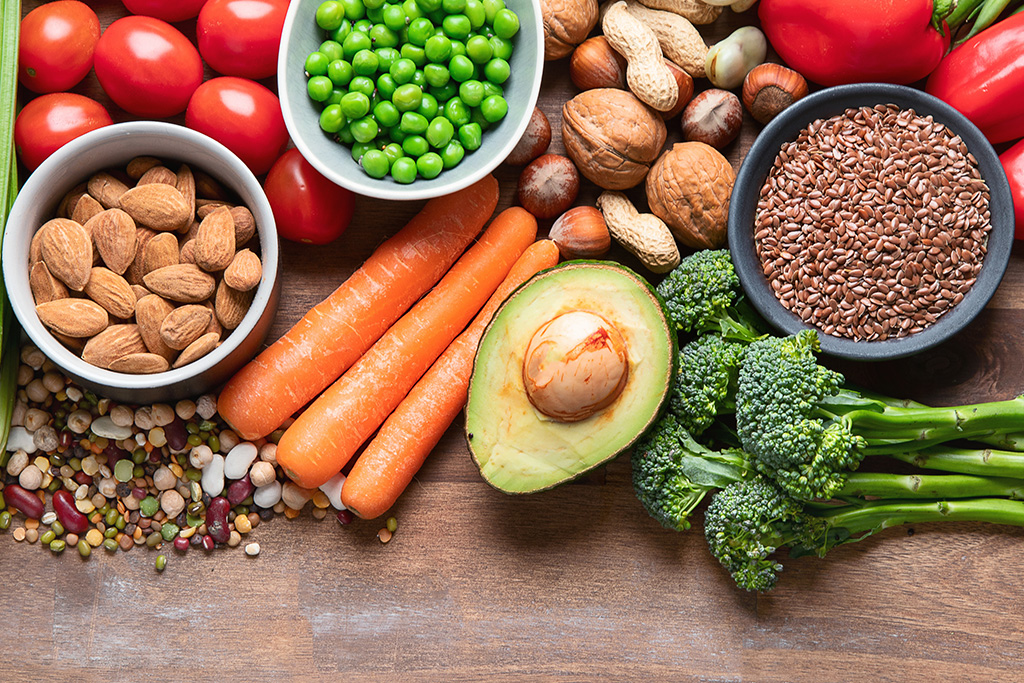
So named for the fibrous texture in foods that provide this nutrient, dietary fiber is a carbohydrate our bodies can’t process. With most simple carbohydrates, such as bleached flour, your body breaks them down into sugars. These sugars supply glucose to power your brain and energize the cells that make your body function. In excess, sugars can turn into fatty tissue and lead to health consequences like tooth decay, diabetes, and heart disease.
However, fiber molecules are special. Even though they are carbohydrates, your digestive system can’t break them down into sugars. Instead, the body passes them through the intestinal tract mostly unchanged. But while eating an indigestible substance would normally be bad for you, fiber actually cleanses the body while journeying through it. The health benefits vary based on which type you consume.

There is common confusion about the terms soluble fiber and insoluble fiber. Both are indigestible; what differentiates them is whether or not they dissolve in water.
When you consume soluble fiber from grains like oatmeal or fruits such as apples, it turns into a gel-like substance in the body. Now imagine this gel mixing with other food in your stomach. Because of its sticky properties, it slows the digestive process. This is a good thing, even though it may not seem to be.
By slowing digestion, soluble fiber makes you feel full faster and suppresses your appetite longer, reducing calorie consumption and even preventing weight gain. It also slows the absorption of sugars into the bloodstream, alleviating spikes in blood glucose levels, and can even help lower blood cholesterol to promote a healthy cardiovascular system.
In contrast, when you get insoluble fiber from sources like whole grains and green, leafy vegetables, it remains mostly solid. Because it’s insoluble, this type of fiber attracts water as it courses through your intestinal tract, helping to keep you regular. On a macro scale, a meta-analysis reported by the National Library of Medicine concluded that fiber may actually reduce your risk of colorectal cancer.
This just scratches the surface of fiber’s many health benefits. As the Harvard T.H. Chan School of Public Health states, “Fiber appears to lower the risk of developing various conditions, including heart disease, diabetes, diverticular disease, and constipation. Fiber’s beneficial role in the gut microbiome . . . [may] alleviate the chronic inflammation associated with these conditions.”

It’s crucial to consider both soluble and insoluble fiber when making dietary choices. The average adult needs at least 25 grams of fiber a day, depending on age, sex, and other factors. However, most Americans only get about 15 grams. There are several reasons why this may be the case, including diets high in processed, simple carbohydrates and meat, which rarely offer fiber at all.
Despite this widespread deficiency, fiber is an extremely common nutrient. There’s little need to turn to supplements when you can add very accessible, high-fiber foods to your diet. The following are all excellent sources of soluble and/or insoluble fiber:
This is just an abbreviated list; there are many other fiber-packed foods out there. In fact, you can safely assume that increasing your intake of many natural grains, fruits, and vegetables will boost your dietary fiber.

You may feel digestive discomfort, including pain and bloating, upon suddenly increasing your fiber intake. However, once you find a healthy balance in your diet, these symptoms should fade. Try to avoid getting this nutrient from supplements unless your doctor specifically recommends them since they are more likely to cause side effects.
Also, forgo processed foods like prepackaged meals and breakfast cereals, many of which are stripped of fiber during production. Some processed foods claim to be good sources of this nutrient, but oftentimes they only offer a few grams per serving. For an overall healthier diet, eat more whole foods. If you base your diet on fruits, vegetables, whole grains, and other fiber-packed foods, dietary fiber is just one of the many benefits to be found.
Finally, keep in mind that because you get calories and digestive bulk from fiber-rich meals, you’re likely to feel full before consuming excess levels. In fact, more Americans should be concerned about consuming too little fiber, not too much. Its many potential benefits, such as improved heart health and cancer prevention, are significant and make the nutrient a necessity for maximizing your health.
Be sure to discuss your fiber intake with your doctor.
No matter the time of day, someone somewhere is likely sitting down for a cup of tea, whether it’s hot, iced, spiced, or served with accompaniments like sugar, cream, or honey. Originating in China more than 5,000 years ago, tea is popular worldwide, offers many health benefits, and can be enjoyed in many novel and exciting forms, such as bubble teas, cheese teas, and tea cocktails.
The world’s love for tea is steeped in tradition. In China, Japan, and Korea, serving it can be an art form and a sign of respect and gratitude. For instance, in Chinese wedding ceremonies, engaged couples often serve tea to their parents as a show of thanks, and tea is also often consumed during Chinese New Year celebrations. Among the types of Chinese tea traditionally enjoyed are black, dark, green, oolong, white, and yellow teas.
But not all tea traditions are the same. In Japan, a ground green tea known as matcha is typically enjoyed in tea ceremonies, and the British sometimes take their brew with milk and sugar, often pairing it with delicacies like cucumber sandwiches and scones. Tea drinkers in India are known to mix rich black tea with cinnamon, cloves, cardamom, and milk to create masala chai, while Thailand has its Thai tea, a black tea blended with condensed milk, spices, and sugar and served over ice.

Nonherbal tea, which is made from the leaves of the Camellia sinensis plant, has long been appreciated for its seemingly contradictory ability to promote both relaxation and concentration. Scientists have found that drinking tea can lower levels of the stress hormone cortisol because of the beverage’s healthy antioxidants and amino acids. On the other hand, caffeine, which is naturally present in nonherbal teas, can increase alertness, cognition, and mood. Research has also shown that tea can reduce your risks of dementia, heart disease, and stroke.
Unlike teas made from the Camellia sinensis plant, herbal teas, which can be traced as far back as ancient Egypt and China, don’t contain tea leaves. Instead, they include a mix of various leaves, flowers, roots, spices, and tree bark. Many are caffeine-free and thus don’t have any stimulating benefits, but they can still have soothing effects. For example, lavender tea may help reduce symptoms of anxiety and depression, while chamomile tea can help you sleep.
Even the ritual of making and drinking tea can provide physical and psychological benefits. For instance, if you sip a cup of green or herbal tea each morning before heading out for the day, that predictable act can lower the levels of stress in your body, which can be beneficial for your heart, mind, and overall health.

Much like how the interest in tea exploded across continents when it was first imported from China centuries ago, the drink is enjoying a modern renaissance worldwide thanks to new tea trends from countries like Taiwan, whose street-food vendors have produced many novel ways to serve and enjoy tea. You can now find these popular tea concoctions in trendy cafes across America:

It should be noted, however, that while these new tea drinks and sweets are tasty and fun, they are often now more dessert-like than medicinal and can contain added sugars and fats, especially when mixed with milk, creamy toppings, and flavorings.
Whether you drink your tea for a caffeine boost, as a stress-soothing ritual, or for its healthy antioxidants, you are one of 159 million Americans who enjoy this refreshing, ancient-yet-trendy beverage daily.
Taking a winter vacation is a great way to either get away from the cold or embrace all that it has to offer. And while camping in the winter might not seem appealing at first, there are locations across the country that make for great winter getaways. Whether you’re new to the activity or are a seasoned pro, here are five places to consider for your winter camping destination.

The Adirondack Park, located in upstate New York, has more than six million acres of protected nature in the Adirondack Mountains. It’s divided up into ten regions, each offering visitors their own unique experiences. Winter campers should be prepared for low temperatures and a lot of snow, but you should also expect beautiful sunrises over the mountains and a great time out in the expansive nature preserve. You can opt to camp in one of the many lean-tos located throughout the park, set up camp at one of the more primitive sites, or book a cabin with heat and private rooms. There’s a lot to see and do in the park, giving you the chance to explore any of the 3,000 freshwater areas, go ice climbing in the mountains, or visit the numerous small towns situated throughout the Adirondack Mountains.

With two year-round campgrounds, Black Canyon is a must-visit in the winter months. Winter campers can choose from the South Rim campground, which has eighty-eight closely packed sites, or the North Rim campground and its thirteen remote sites. The park offers visitors the chance to check out the oldest and steepest rock spires in North America, explore the inner canyon of the rock formations, and hike along eight different trails ranging from easy to strenuous.
All visitors are in for a celestial experience since Black Canyon is also an International Dark Sky Park, a certification it received from the International Dark-Sky Association (IDA) in 2015. The IDA recognizes lands that have been actively protected from light pollution, which allows for exceptional views of the night sky. So on cloudless nights, visitors can often catch a glimpse of the International Space Station and even the Milky Way.
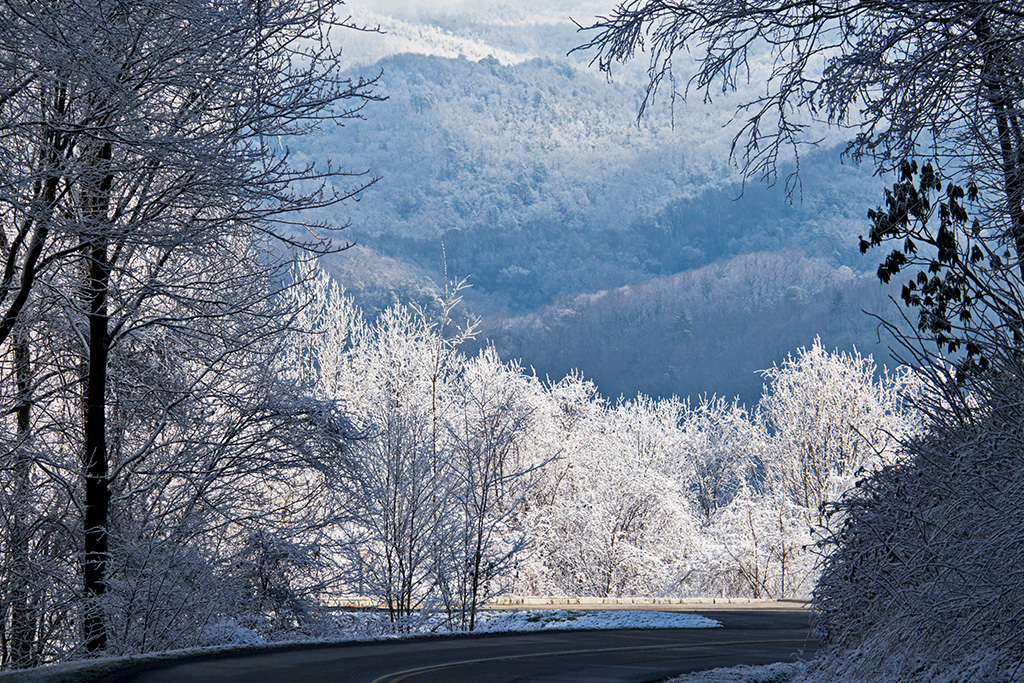
This popular park offers a variety of campgrounds, including primitive areas for the advanced camper and hiker and more developed locations for those looking to camp in comfort. The Cades Cove, Look Rock, and Smokemont Campgrounds are open year-round, allowing you to camp out in the beautiful Smokies and explore all that the area has to offer. There are 150 developed hiking trails and over 40 waterfalls located throughout the park, so if it has recently snowed, you’re bound to see frozen and snow-covered waterfalls on your trip. As a bonus, the Smokies are a short drive to Gatlinburg and Pigeon Forge, towns with several family-friendly offerings including novelty shops, skiing, snow tubing, and ice-skating at Ober Mountain.

If you need some winter sun, this is the destination for you. Located off the southern coast of Texas, Padre Island National Seashore is the world’s longest stretch of undeveloped barrier island with sixty-six miles of beaches and natural habitats. The national park offers year-round camping at five different locations, so you can pick your favorite campsite and wake each morning to the amazing sunrise over the beach. You can opt to camp right on the beach on one of the primitive campgrounds or find your spot near the dunes or laguna at one of the developed campsites with running water. You can also explore the dunes throughout the park via four-wheel-drive vehicles, go fishing in the morning, or try to spot local wildlife. Whatever you choose to do, you’re sure to have a unique and unforgettable camping experience with warm nights and beautiful mornings on the beach.
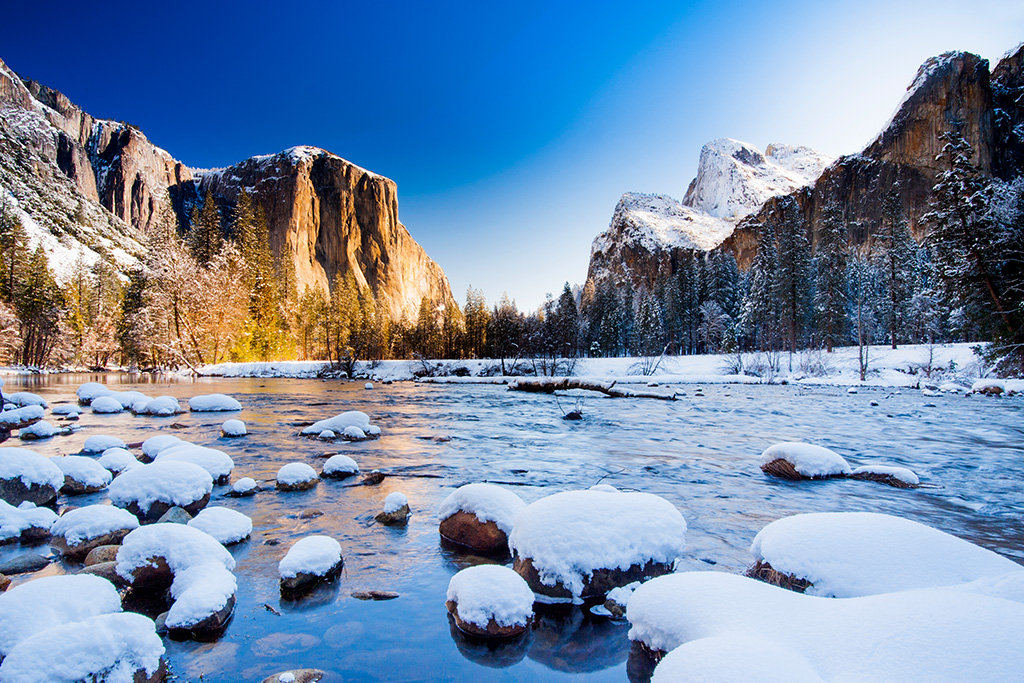
With more than 750 miles of trails to explore, Yosemite National Park is a dream destination for hikers throughout the year. But the winter months offer a unique opportunity to explore Yosemite’s snow-covered trails. Visitors have the option to travel throughout the park via cross-country skiing or snowshoeing, seeing the landscape from a brand-new perspective. With ranger-led snowshoe walks out of Badger Pass Ski Area, it’s a great opportunity for both avid and novice hikers to encounter the beauty of Yosemite. There are several other fun winter activities, including snowboarding, downhill skiing, ice-skating, and snow tubing, that make the park a must-visit in the winter months. Visitors can camp at one of Yosemite’s four year-round campgrounds: Upper Pines, Camp 4, Wawona, and Hodgdon Meadow (though camp closures vary according to weather conditions). You can camp out in the snow and then wake up and explore all that Yosemite has to offer.
A slow cooker is a perfect solution for easy-to-make, appetizing meals any day of the week. These two flavorful meals are perfect additions to your repertoire of seasonal recipes.
This recipe is loaded with all the seasonings and richness you would expect in a flavorful Japanese meal.
You don’t have to be a vegetarian to love this meat-free, gluten-free dish that’s bursting with fresh vegetables.
recipe by patterson watkins
photos by shana smith
Serve these mouthwatering short ribs as a memorable meal for your family or as a welcoming dish at a get-together.
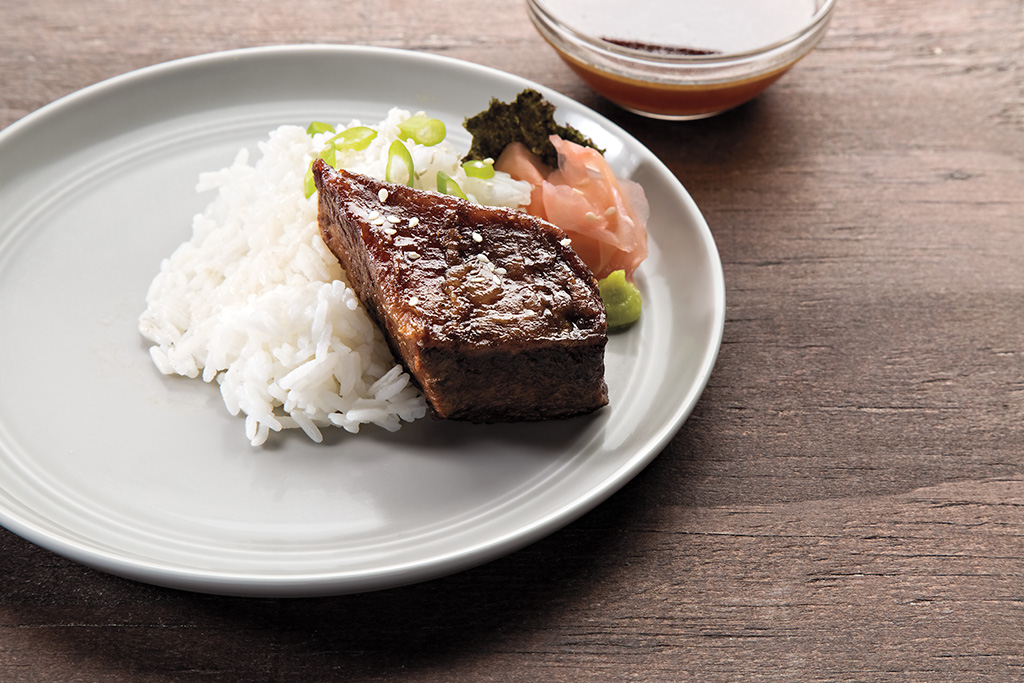
Serves 4



recipe by patterson watkins
photos by shana smith
Packed with fresh vegetables, this hearty, gluten-free curry dish is sure to satisfy on a winter night.

Serves 4
Tip: If you like your vegetables a little crunchy, slow-cook for 2 hours. If you prefer softer veggies, adjust the time to 4 hours.
